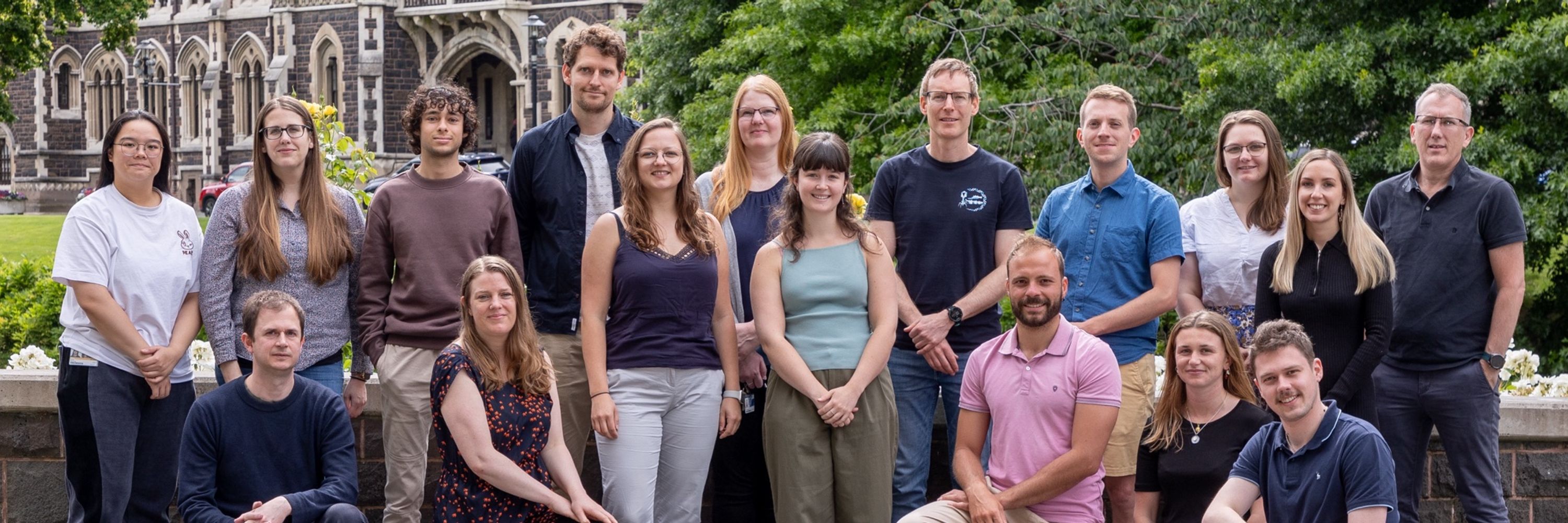Peter Fineran
@peterfineran.bsky.social
460 followers
540 following
15 posts
Prof. and Head of Phage-host interactions (Phi) lab. Phage defences, counter-defences, CRISPR-Cas, toxin-antitoxin. FRSNZ / James Cook Fellow
Posts
Media
Videos
Starter Packs
Reposted by Peter Fineran
Reposted by Peter Fineran
Dan Sloan
@sloanevolab.bsky.social
· Sep 8

Assistant Professor Plant-Microbe Interactions
We seek a creative, collaborative, and visionary plant biologist to establish an internationally recognized research program at the forefront of plant-microbe interactions aimed at understanding how t...
jobs.colostate.edu
Reposted by Peter Fineran
Eduardo Rocha
@epcrocha.bsky.social
· Sep 8
Reposted by Peter Fineran
Reposted by Peter Fineran
Milan Gerovac
@gerovac.bsky.social
· Sep 11

Programmable antisense oligomers for phage functional genomics - Nature
Establishing antisense oligomers as versatile, non-genetic tools to silence phage mRNAs opens applications in basic research and biotechnology, as shown by identifying essential factors for propagatio...
www.nature.com
Reposted by Peter Fineran
José R Penadés
@jrpenades.bsky.social
· Sep 9

Chimeric infective particles expand species boundaries in phage-inducible chromosomal island mobilization
Capsid-forming PICIs (cf-PICIs) produce their own capsids and exploit phage tails
from unrelated species to transfer their DNA across bacterial hosts. This tail piracy
enables broad dissemination and ...
www.cell.com
Peter Fineran
@peterfineran.bsky.social
· Aug 30
Peter Fineran
@peterfineran.bsky.social
· Aug 20
Reposted by Peter Fineran
Peter Fineran
@peterfineran.bsky.social
· Aug 18
Peter Fineran
@peterfineran.bsky.social
· Aug 18

Crosstalk between three CRISPR-Cas types enables primed type VI-A adaptation in Listeria seeligeri
CRISPR-Cas systems confer adaptive immunity to their prokaryotic hosts through the process of adaptation, where sequences are captured from foreign nu…
www.sciencedirect.com
Peter Fineran
@peterfineran.bsky.social
· Aug 18
Reposted by Peter Fineran
Luuk Loeff
@lloeff.bsky.social
· Aug 18
Reposted by Peter Fineran
George Bouras
@gbouras13.bsky.social
· Aug 8

Protein Structure Informed Bacteriophage Genome Annotation with Phold
Bacteriophage (phage) genome annotation is essential for understanding their functional potential and suitability for use as therapeutic agents. Here we introduce Phold, an annotation framework utilis...
www.biorxiv.org










